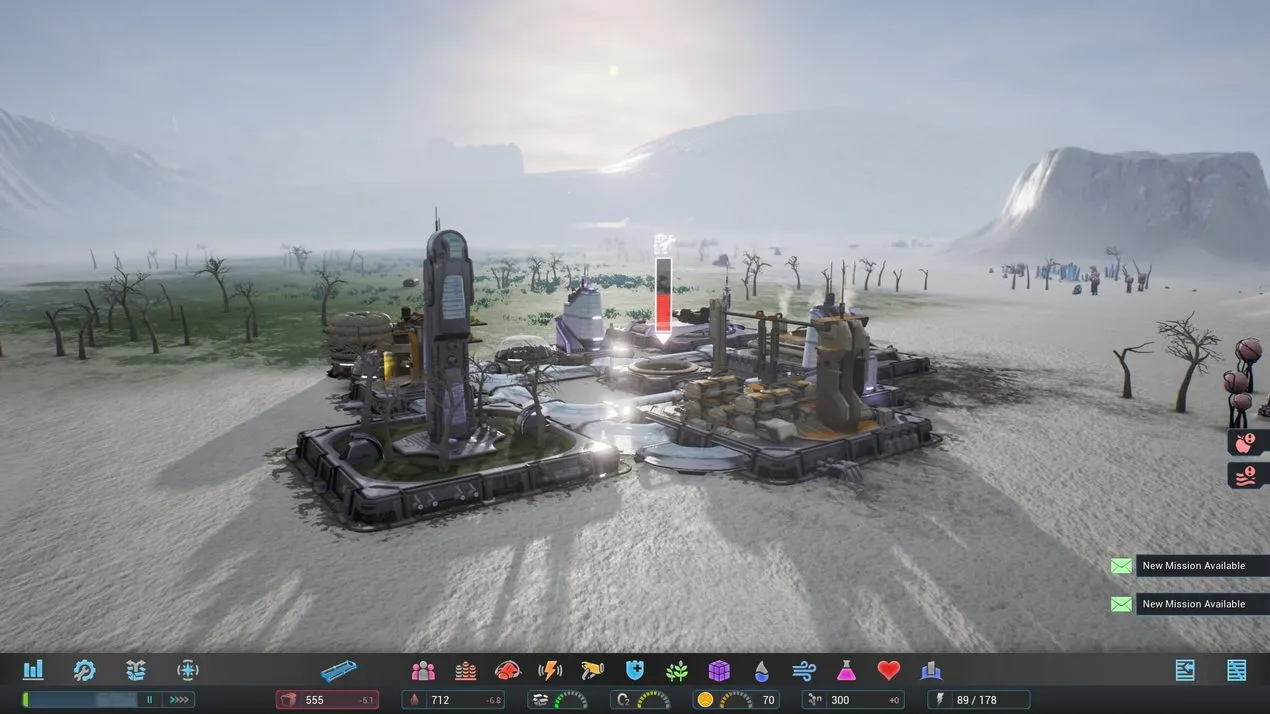
Aven Colony: A Promising City-Builder in Space with Narrative Shortcomings
Contents
The resurgence of space-themed games continues with titles like Astroneer and Space Engineers embracing the survival genre. Aven Colony, however, follows a different path, reminiscent of its predecessor Space Colony, focusing on city-building in the vast expanse of space. Developed by Mothership Entertainment, Aven Colony blends core city-building mechanics with a space setting and a narrative filled with intrigue. Does it successfully combine these elements to create a compelling experience?
 Aven Colony’s vibrant visuals showcase a variety of environments.
Aven Colony’s vibrant visuals showcase a variety of environments.
Excelling in Space City-Building Mechanics
Aven Colony excels in incorporating the challenges of a space environment into its city-building mechanics. Resources like oxygen, electricity, water, and food, often taken for granted in traditional city-builders, become crucial elements of survival and expansion. While other games like Banished and Life is Feudal: Forest Village focus on micromanagement, Aven Colony leans towards a macroscopic approach similar to SimCity and Cities: Skylines.
The game draws significant inspiration from Cities: Skylines in its interface design and management systems. However, it successfully adapts these elements, streamlining them for a more accessible experience. New players can quickly grasp the core concepts and begin constructing their extraterrestrial settlements.
Aven Colony emphasizes the challenges of space colonization by highlighting the importance of essential resources like oxygen, electricity, water, and food.
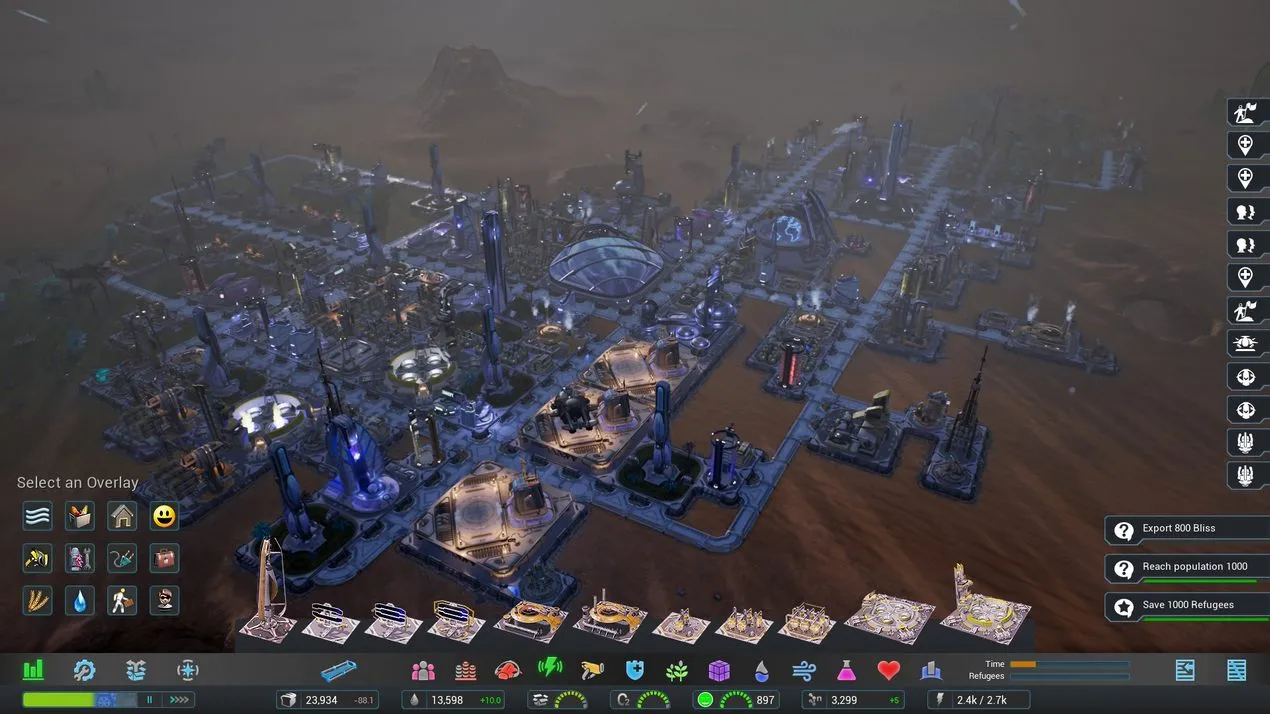 Managing resources and constructing specialized buildings are key to survival.
Managing resources and constructing specialized buildings are key to survival.
While not overly complex, Aven Colony presents a variety of challenges tailored to its unique setting. From food shortages in the icy Azara Falls to refugee crises in the arid Arido Mesa and the harsh conditions of Ender Crater, players face escalating difficulties that introduce them to the complexities of managing a colony in space.
A Rich and Diverse World
Aven Prime, the primary setting of Aven Colony, immediately impresses with its diverse ecosystem. From unique flora and fauna to varied weather patterns and landscapes ranging from tropical forests to scorching deserts, Aven Prime echoes Earth while maintaining an alien atmosphere. This alien world comes with its own set of dangers, from hostile weather and diseases to subterranean creatures.
This rich environment enhances the gameplay, with each region presenting distinct visual and strategic challenges. The four main areas – tropical, desert, arctic, and the extreme environment of Ender Crater – each demand a unique approach to colony development.
The diverse ecosystem of Aven Prime, the main setting of Aven Colony, provides a captivating and challenging backdrop for the gameplay.
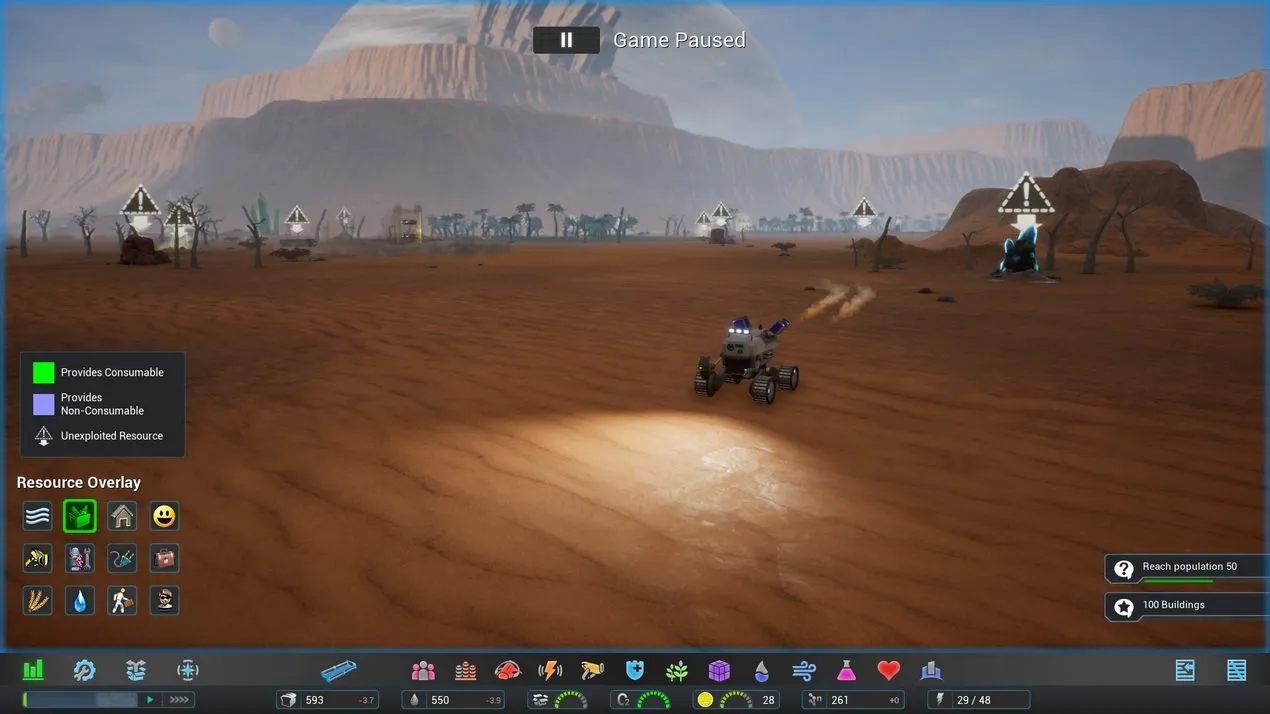 Different regions present unique challenges and opportunities for expansion.
Different regions present unique challenges and opportunities for expansion.
The game’s graphics also contribute significantly to the immersive world-building. Distinct color palettes highlight the characteristics of each region, and effective lighting and shadow effects further enhance the visual experience. Detailed building models, though often viewed from a zoomed-out perspective, contribute to the overall aesthetic of the colony.
The Narrative Disconnect
The narrative of Aven Colony, while intriguing in its premise, suffers from a significant flaw: its disconnect from the gameplay. Players are essentially observers in the unfolding story, their actions having little to no impact on the narrative’s progression. For example, in the Sandy Gulch scenario, the Minister of the Interior, Kalandra Malik, is mysteriously incapacitated. While players are informed that they can assist in the search, no actual tasks are assigned, and progressing the story simply requires continued city-building. This pattern repeats throughout the game, diminishing the player’s agency within the narrative.
The narrative of Aven Colony fails to integrate meaningfully with the gameplay, leaving the player as a passive observer.
The developers missed an opportunity to weave the narrative into the gameplay by creating missions or objectives related to the storyline. In the Kalandra Malik example, requiring the construction of specific buildings or research of particular technologies could have created a more engaging and interconnected experience.
Repetitive Side Missions
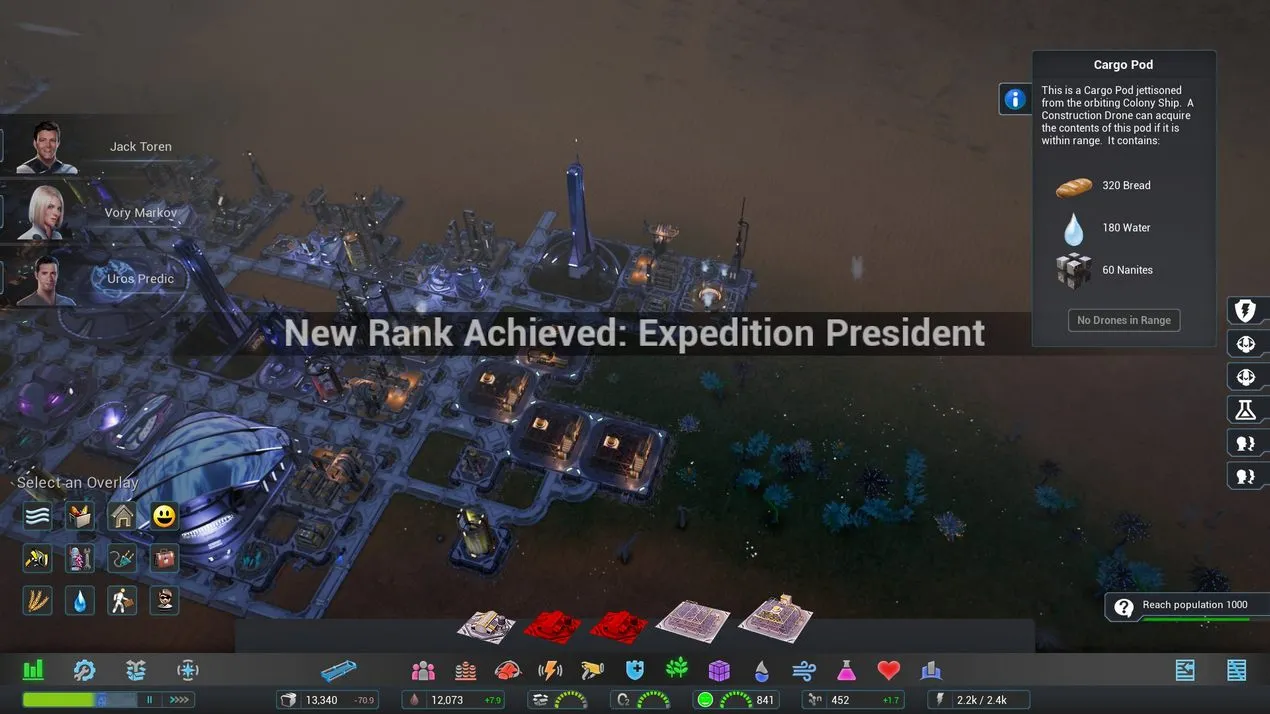 While the game offers side missions, they become repetitive and detract from the overall experience.
While the game offers side missions, they become repetitive and detract from the overall experience.
City-building games often appeal to players who enjoy problem-solving. However, Aven Colony‘s repetitive side missions become a chore rather than a challenge. These missions often reiterate objectives from previous levels, serving as reminders of basic gameplay mechanics. While helpful for new players, they quickly become tedious for experienced players and detract from the open-ended nature of the game.
The repetitive nature of the side missions in Aven Colony diminishes their value and can become frustrating for experienced players.
Conclusion
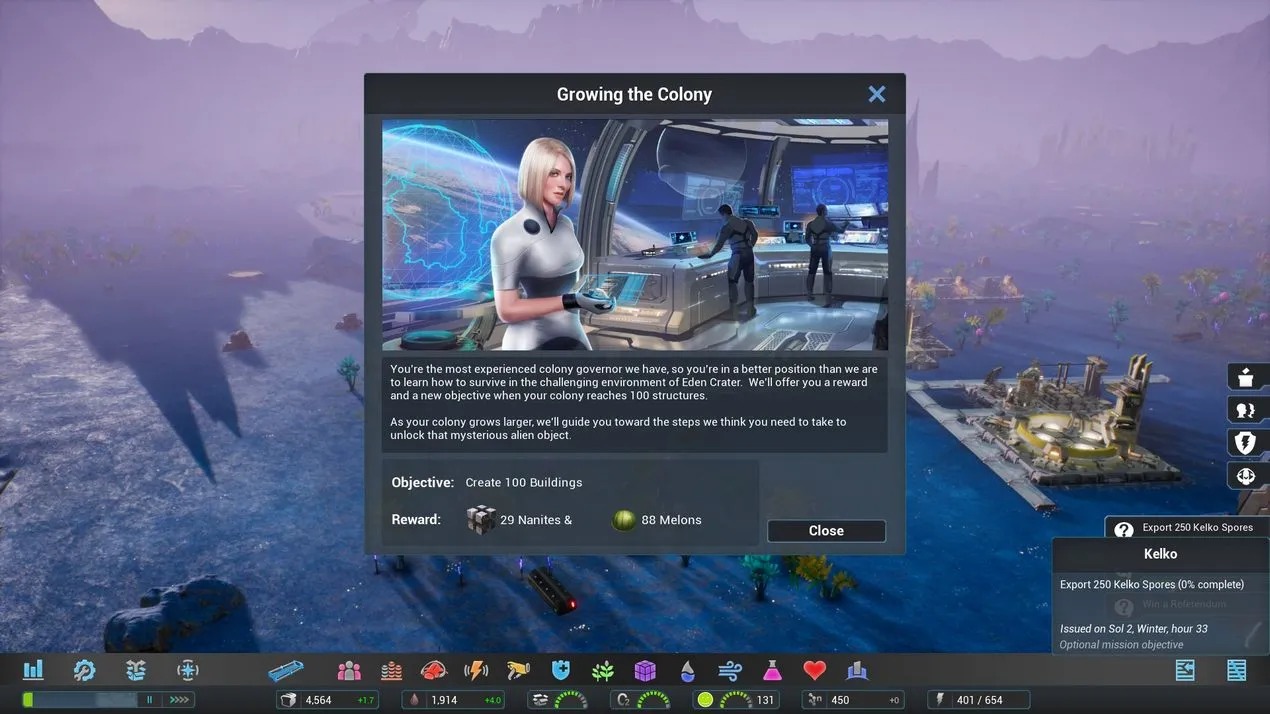 Despite its narrative flaws, Aven Colony offers a compelling city-building experience in a unique setting.
Despite its narrative flaws, Aven Colony offers a compelling city-building experience in a unique setting.
Aven Colony shines in its core city-building mechanics and its immersive depiction of an alien world. However, its disconnected narrative and repetitive side missions hold it back from reaching its full potential. While the game offers a visually stunning and engaging city-building experience, addressing these narrative shortcomings would elevate it to a truly compelling space colonization simulation.





Comments (0)